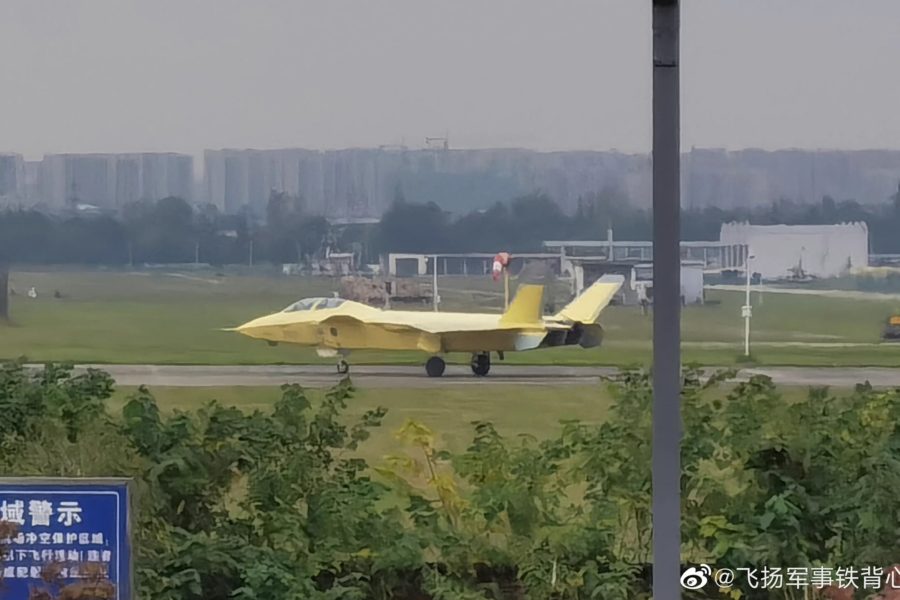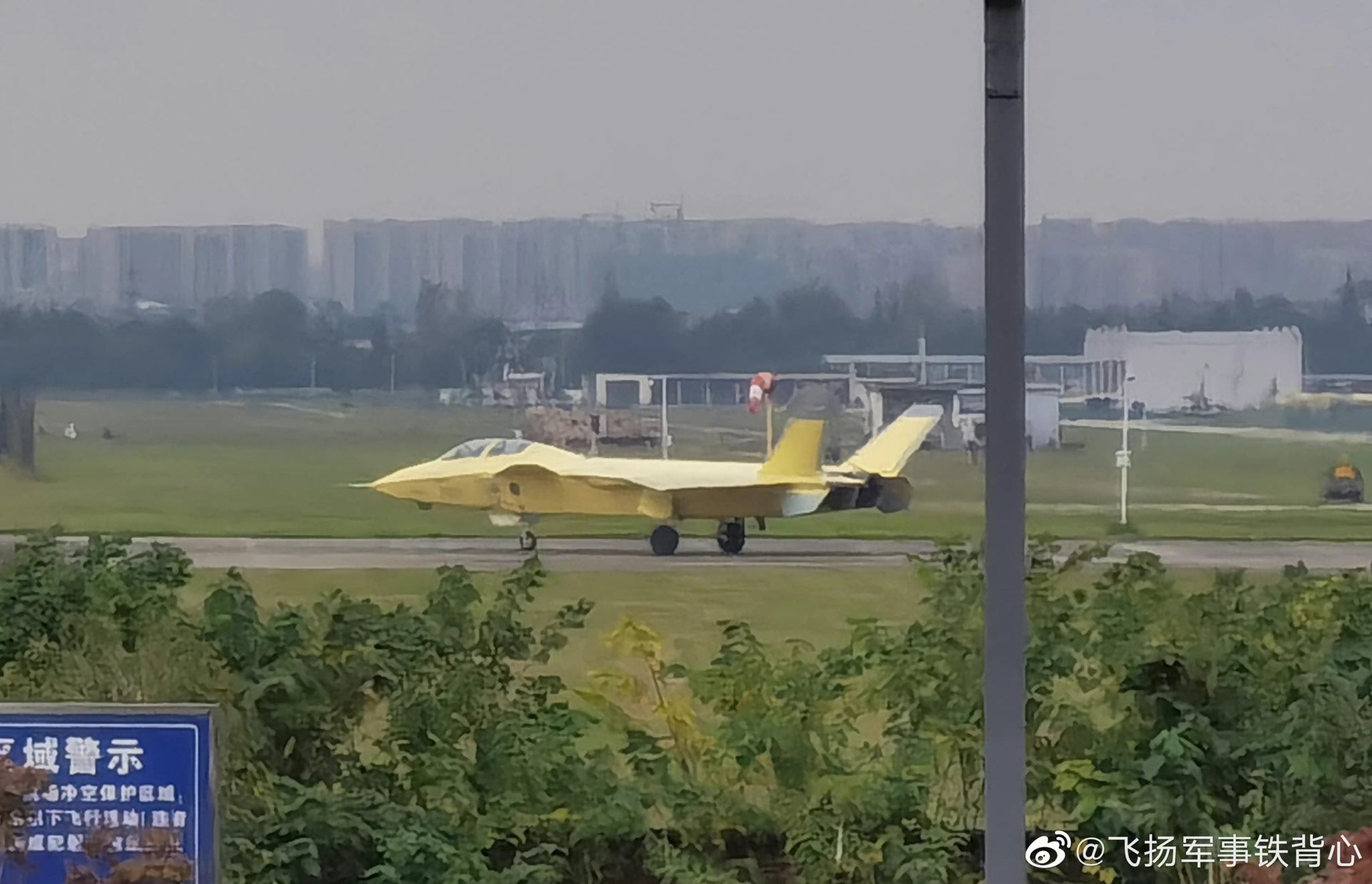China’s New Two-Seat J-20: Trainer or Manned-Unmanned Teaming Platform? The world‘s first twin-seater stealth fighter
Oct. 28, 2021 | By John A. Tirpak
A short video of a Chengdu J-20 Mighty Dragon that circulated on the internet Oct. 28 shows a taxiing new two-seat version of the stealth fighter, still in primer and untreated composite. It could indicate at least a trainer version of the airplane or possibly China’s future approach to manned-unmanned air combat teaming.
China has hinted at the existence of a two-seat J-20—possibly known as the J-20B or J-20S—in social media videos and trade show presentations, but the new images, if authentic, indicate the airplane has reached the fabrication stage. China has leaked or allowed videos to be circulated of Mighty Dragons taxiing at the same test facility since the J-20’s existence was first revealed during former Defense Secretary Robert Gates’ visit to that country in 2011.
The U.S. opted not to develop a two-seat/trainer version of the F-22 and F-35. This was both to save money but also because it was believed pilots could become proficient enough in the simulators that their first flight in the types could also safely be their first solos. That decision was based on experience with the A-10 and F-117, neither of which had an operational two-seat version for training.
While China may have learned from operating the J-20 in a training/development role for the last few years that a two-seat trainer is needed to improve safety, the fact that it was not created early in the program hints that there are other reasons for its appearance now.
One possibility is that the two-seat J-20 is a rough analogy of the USAF’s F-15E two-seat strike airplane, in which the weapon systems officer manages the employment of ground attack munitions. However, the J-20 is clearly optimized for higher-altitude flight and likely, standoff operations in the strike role. The F-15E was built around the two-seat F-15B/D trainer versions, however, which appeared soon after the single-seat F-15A and C models.
The two-seater may also indicate that, like the U.S. Air Force, the Chinese People’s Liberation Army Air Force is planning to operate drones or other unmanned aircraft in partnership with its frontline fighters. A second crew member in the cockpit could relieve the pilot of managing these additional aircraft while operating in what is sure to be a complex and rapidly-shifting air combat environment. The back-seater could reduce the pilot’s workload substantially in this application, at the cost of some reduced range due to the extra weight of a second crew station.
China is known to be working on a number of “loyal wingman”-type projects—including a stealthy-looking, cockpit-less jet similar to the J-20 called “Dark Sword”—and recent intelligence estimates have said that China is advancing rapidly in artificial intelligence. Dark Sword features a chin-mounted, faceted electro-optical system like the one on the J-20 that is a near-twin of that on the F-35, and which the Pentagon believes was stolen and copied. The second crew member could potentially manage unmanned teammates for a large number of J-20s.
It’s unlikely that the new aircraft is meant to be an electronic warfare version of the J-20, as the emissions required for such a mission would largely negate the airplane’s stealth qualities. Such a mission would likely best be hosted aboard a non-stealthy platform.
The U.S. Air Force did not have a comment on the new aircraft.

China's New Two-Seat J-20: Trainer or Manned-Unmanned Teaming Platform? | Air & Space Forces Magazine
Images circulating on social media appear to show China's new two-seat J-20 Mighty Dragon stealth fighter. Here's what it might mean.




